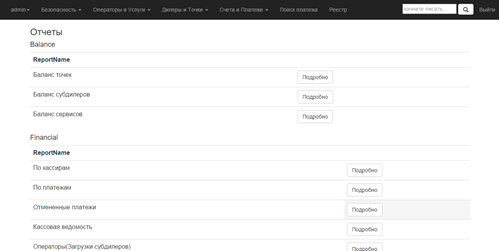Payminator
Description of the system
Payminator is an electronic payment system, a system of settlements between financial organizations, business organizations and users when buying and selling goods and for various services.
The system consists of the following components:
- Service part
- Client part - API components, SMPP, Web portal
- System Management Tools
The system can act as:
- payment system
- service provider (which is connected to it) for other payment systems
Service part
A lot of services serve to fulfill the functions assigned to them. Built on the principle of SOA (Service-oriented architecture). The chosen architecture allows hot swapping, without having to stop the entire system. The expansion of the system is much faster.
The security of the system is built using the latest technologies in this area.
When performing operations on services, the following actions are performed
- Saving the received data to the service, highlighting the type of operation
- Verifiying the rights to perform this operation
- Checking balances for this operation (performed for certain types of transactions)
- Checking the current fields according to predetermined rules or limits (performed for certain types of transactions)
System Management Tools
The system can be managed through the client part (web portal).
- The system allows you to flexibly change its behavior through the mechanism of "Limits"
- Manage directions, payment priorities
- Security management, division of rights
Client part
The client part consists of
- API - a set of libraries or REST service for connecting third-party payment systems or clients
- SMPP - module for interaction with the system via SMS
- Web portal - a web site for displaying up-to-date information about the system, setting up the system, reports. Consists of sections for administration and for the office.
Web Portal Modules. Security
This module allows you to dynamically change the rights for users to access the modules, operations. Provides the necessary level of security for the entire system and has fine-tuning, which allows you to quickly scale the rights, and fine-tune each user system
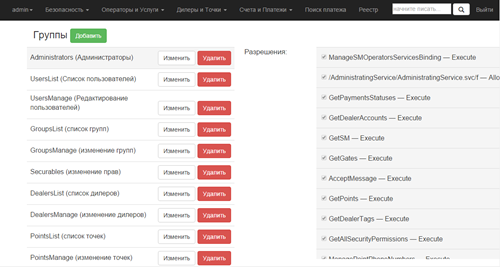
Connection of suppliers
Allows you to configure the connection of new service providers, configure the routing of requests to them in the light of priorities, switch between providers in case of loss of connection with one of them. 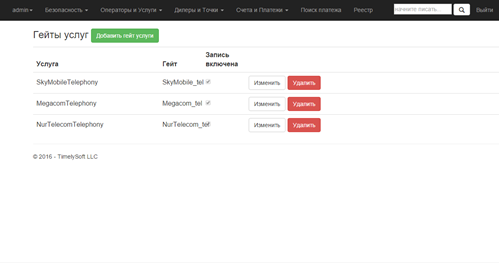
You can also edit which system members will be allowed certain services
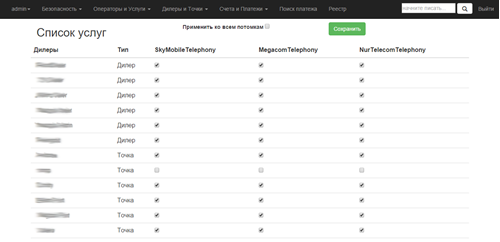
Limits
The mechanism for creating behavior patterns for the system and applying them to groups or to specific users of the system. Its use increases the flexibility of the system's behavior and entrusts itself with a part of the business logic, taking into account the client's requirements
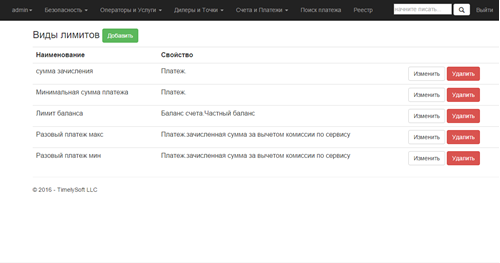
User management
Control over users of the system and the possibility of their interaction with service providers is controlled by the security module. Use of templates (Limits) by users allows you to monitor their business behavior in the system.
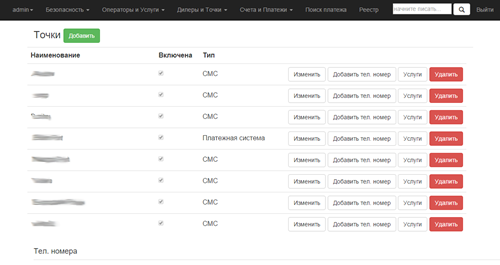
The interface is created taking into account business requirements, which simplifies the work of the end user.
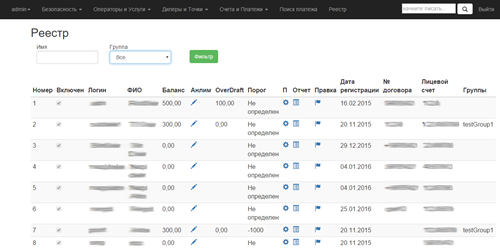
Commissions
The commission mechanism uses user-created templates and is scaled by groups, and applies to specific users of the system. Allows you to fine-tune all the necessary values to account for the mutual settlements of participants in the system
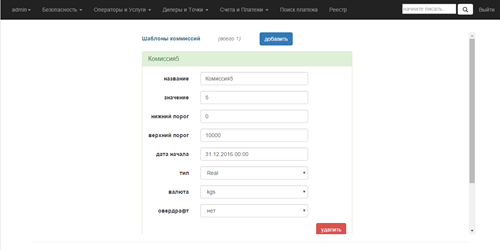
Account management
The use of different types of accounts, currencies, reporting periods allows the system to keep a detailed account of all financial relationships between system participants and service providers. The accounts are closely related to commissions, limits, which determine the possibility of a financial transaction
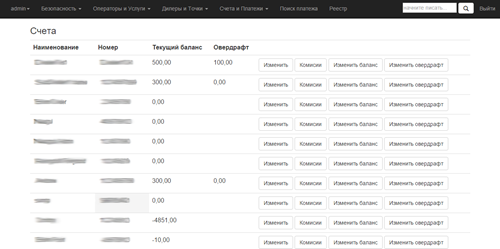
Payments
The payment module creates and processes them taking into account the selected user rights, limits, commissions, service providers and directions for which payments are made. The creation and execution of the payment uses a priority queue system, a business process state machine. The current payments and their statuses can be viewed in the corresponding section.
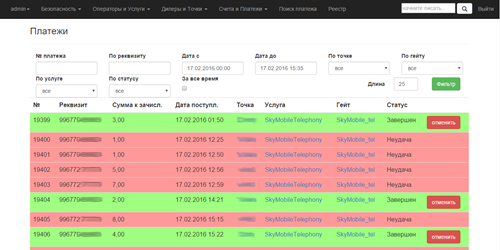
Reports
Contain detailed information on postings between system participants and service providers
